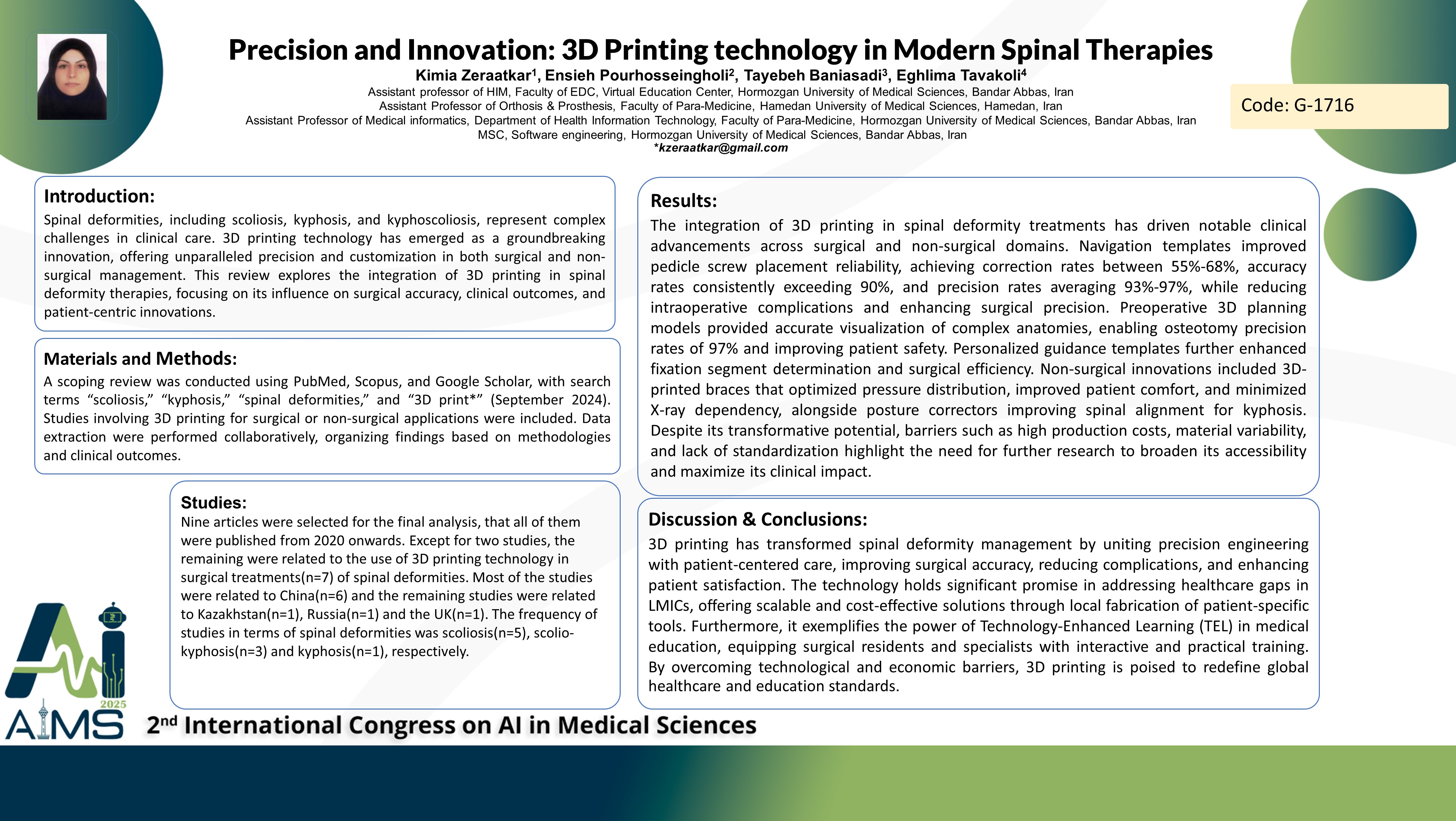Precision and Innovation: 3D Printing technology in Modern Spinal Therapies
Code: G-1716
Authors: کیمیا زراعتکار *, Ensieh Pourhoseihgholi ℗, طیبه بنی اسدی, اقلیما توکلی
Schedule: Not Scheduled!
Tag: Robotics in Surgery and Care
Download: Download Poster
Abstract:
Abstract
Background, Aims: Spinal deformities, including scoliosis, kyphosis, and kyphoscoliosis, represent complex challenges in clinical care. 3D printing technology has emerged as a groundbreaking innovation, offering unparalleled precision and customization in both surgical and non-surgical management. This review explores the integration of 3D printing in spinal deformity therapies, focusing on its influence on surgical accuracy, clinical outcomes, and patient-centric innovations. Methods: A scoping review was conducted using PubMed, Scopus, and Google Scholar, with search terms “scoliosis,” “kyphosis,” “spinal deformities,” and “3D print*” (September 2024). Studies involving 3D printing for surgical or non-surgical applications were included. Data extraction and thematic analysis were performed collaboratively, organizing findings based on methodologies and clinical outcomes. Results: The application of 3D printing in spinal deformity treatments has demonstrated diverse clinical advancements. The integration of 3D printing in spinal deformity treatments has driven notable clinical advancements across surgical and non-surgical domains. Navigation templates improved pedicle screw placement reliability, achieving correction rates between 55%-68%, accuracy rates consistently exceeding 90%, and precision rates averaging 93%-97%, while reducing intraoperative complications and enhancing surgical precision. Preoperative 3D planning models provided accurate visualization of complex anatomies, enabling osteotomy precision rates of 97% and improving patient safety. Personalized guidance templates further enhanced fixation segment determination and surgical efficiency. Non-surgical innovations included 3D-printed braces that optimized pressure distribution, improved patient comfort, and minimized X-ray dependency, alongside posture correctors improving spinal alignment for kyphosis. Despite its transformative potential, barriers such as high production costs, material variability, and lack of standardization highlight the need for further research to broaden its accessibility and maximize its clinical impact. Conclusion: 3D printing has transformed spinal deformity management by uniting precision engineering with patient-centered care, improving surgical accuracy, reducing complications, and enhancing patient satisfaction. The technology holds significant promise in addressing healthcare gaps in LMICs, offering scalable and cost-effective solutions through local fabrication of patient-specific tools. Furthermore, it exemplifies the power of Technology-Enhanced Learning (TEL) in medical education, equipping surgical residents and specialists with interactive and practical training. By overcoming technological and economic barriers, 3D printing is poised to redefine global healthcare and education standards.
Keywords
3d printing, Scoliosis, Kyphosis, Orthosis
